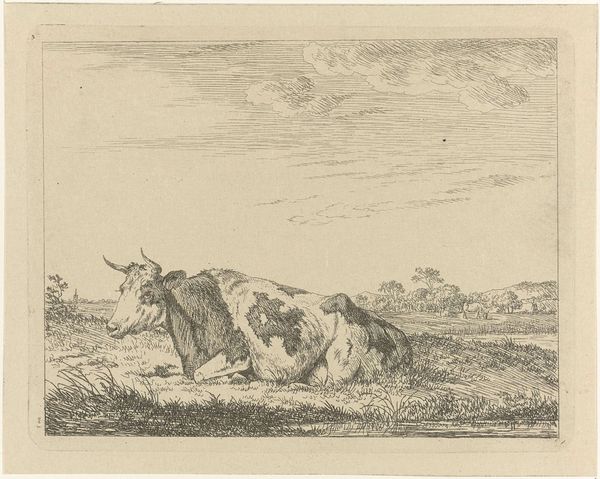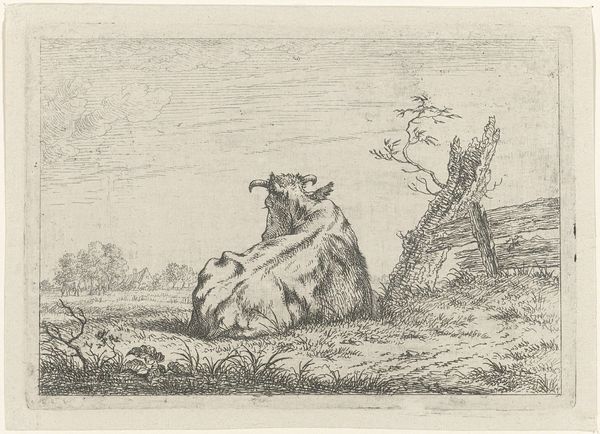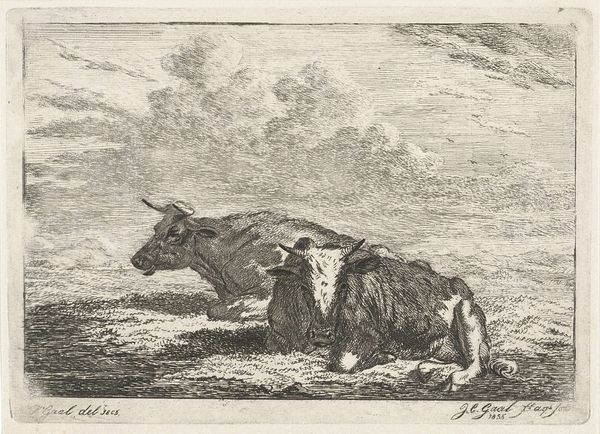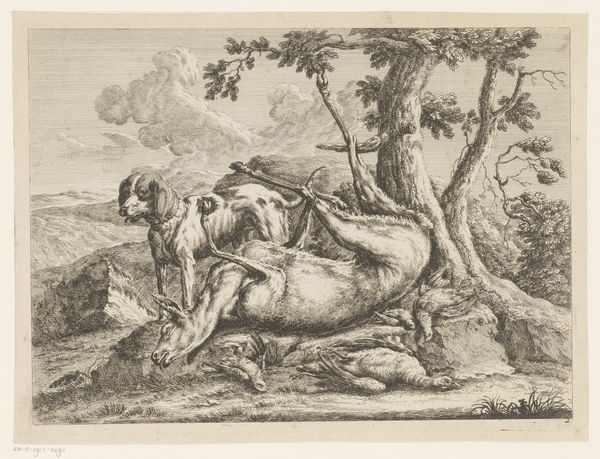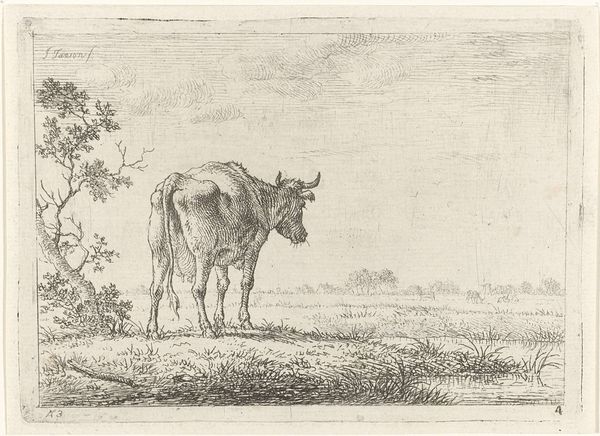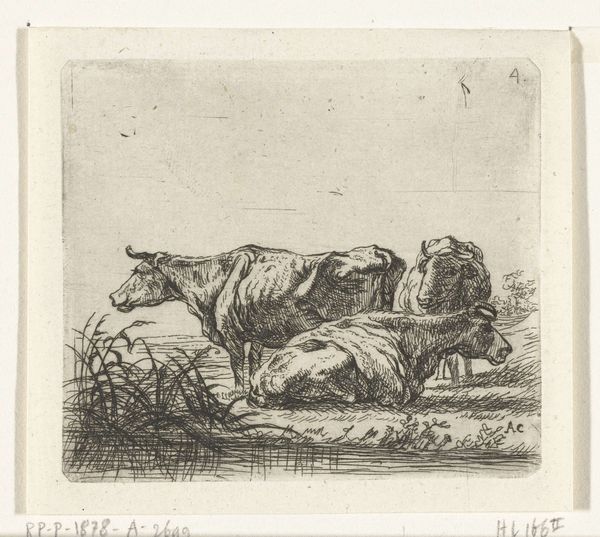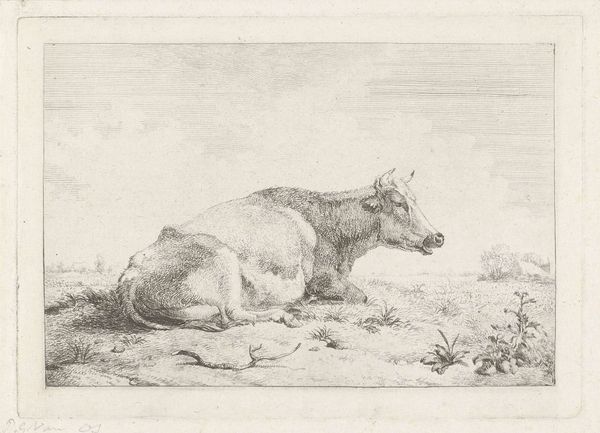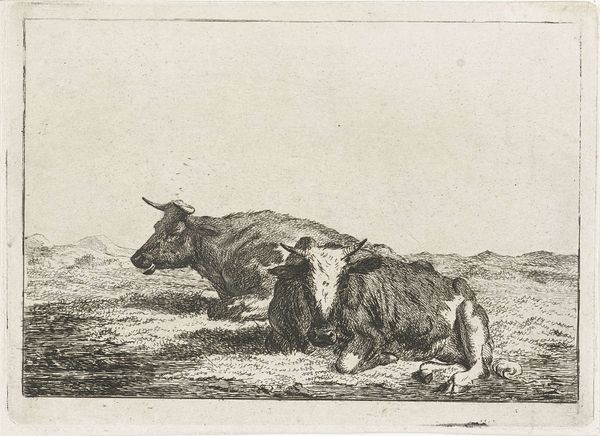
print, etching
#
animal
#
dutch-golden-age
# print
#
etching
#
landscape
#
genre-painting
#
realism
Dimensions: height 138 mm, width 177 mm
Copyright: Rijks Museum: Open Domain
Editor: This is "Liggende koe aan waterkant," or "Lying Cow by the Waterside," an etching by Johannes Janson, made sometime between 1761 and 1784. It's currently held at the Rijksmuseum. It's quite serene, really. A solitary cow in a pasture. What do you see in this piece? Curator: Beyond the literal depiction of a cow, consider the deeper symbolism. The cow, throughout art history, embodies notions of pastoral life, fertility, and nourishment. Note its passive pose; could that be commentary on contentment? Also, the water's edge evokes ideas of transition and reflection. Does that symbolism hold in light of its socio-economic setting? Editor: I hadn’t thought about it like that. I was just appreciating the simplicity of the scene. The cow just *is.* Curator: But even "being" holds meaning. During this period, the Dutch Golden Age was waning, yet rural scenes experienced heightened idealization. The etching embodies the collective memory of a simpler time, maybe in contrast to the era’s burgeoning urban complexities. See how the etcher used delicate lines, seemingly with intent to recall an age now past. Is this cow a stand-in for that Dutch past? Editor: It's interesting how one image can carry so many layers of interpretation. So the presence of the cow symbolizes this need to return to simpler times. And it speaks to cultural anxiety around economic transitions. Curator: Precisely. Art serves as both a mirror and a lamp – reflecting cultural values, but also illuminating unspoken anxieties and desires. It's never just a cow, is it? Editor: Definitely not, this was so helpful in shifting my perspective on not just this print, but art generally. Thanks so much! Curator: My pleasure! Considering historical context is the key to understanding how art is so evocative, even after centuries.
Comments
No comments
Be the first to comment and join the conversation on the ultimate creative platform.
